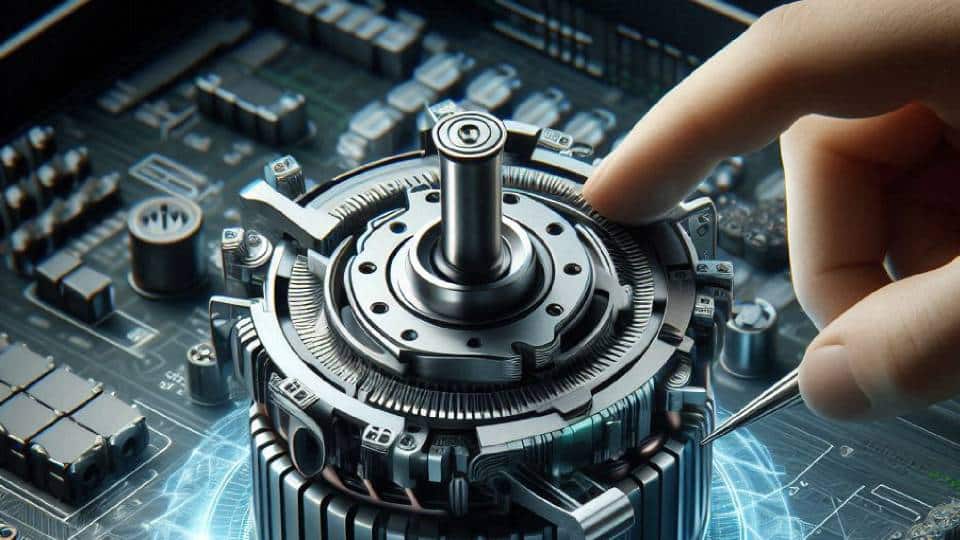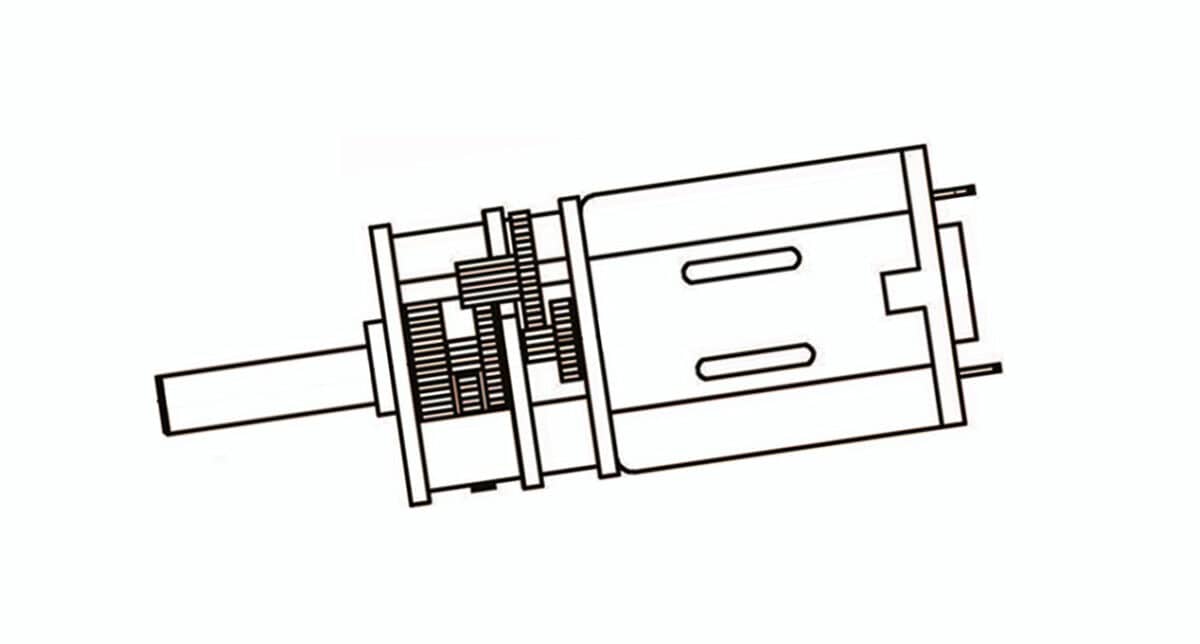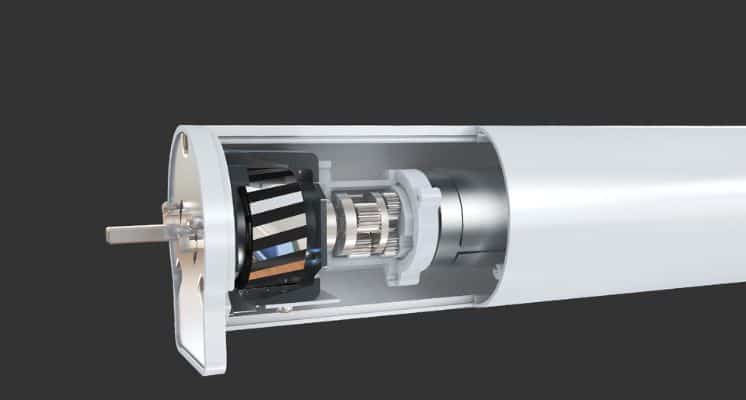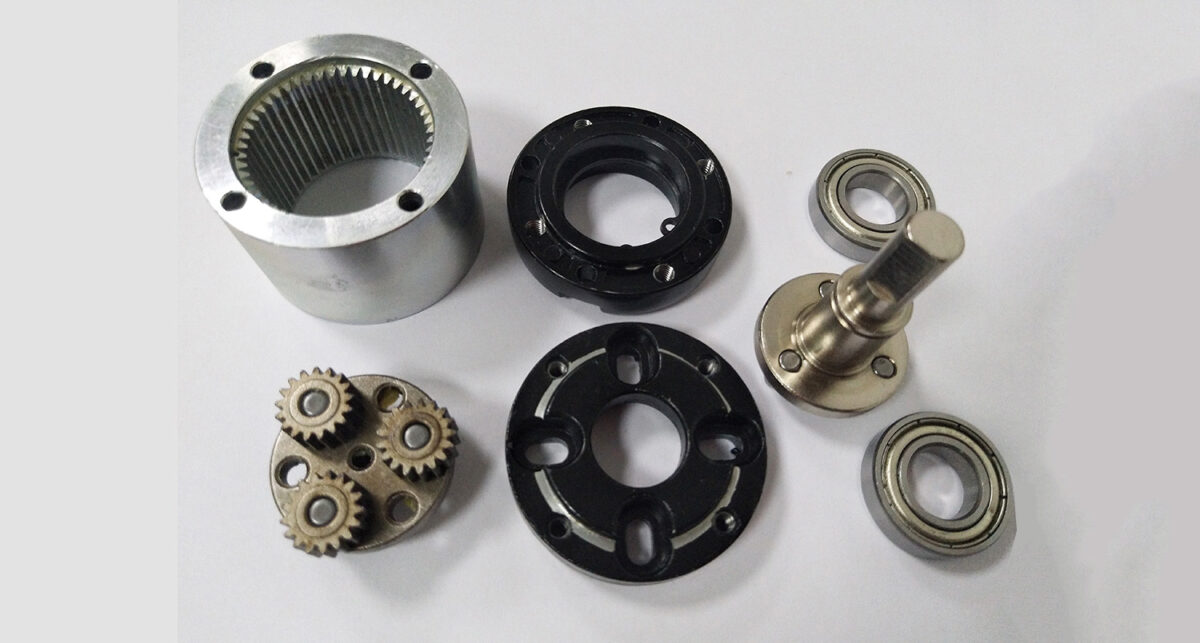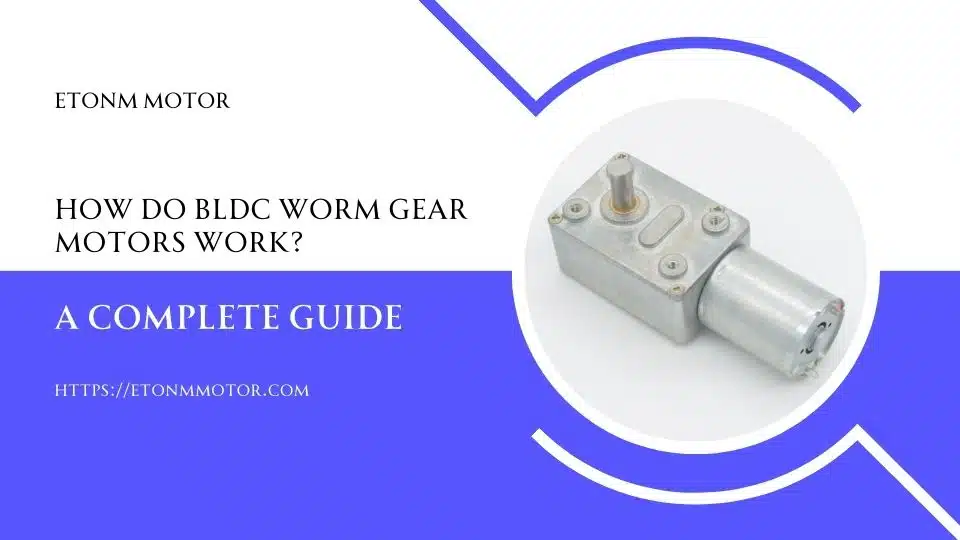Discover the key factors that influence the performance of brushless motors, from electromagnetic design to cooling systems. Learn how to optimize these motors for various applications.
Table of Contents
What Factors Affect the Performance of Brushless Motors?
Brushless motors have become a cornerstone of modern technology, powering everything from smart home devices to advanced medical equipment. Unlike traditional brushed motors, brushless motors rely on electronic commutation, eliminating the need for brushes and significantly reducing wear and tear. This design not only enhances efficiency—often reaching 85% or higher—but also extends the motor’s lifespan to tens of thousands of hours, making them a reliable choice for demanding applications.
One of the standout features of brushless motors is their ability to operate quietly, making them ideal for noise-sensitive environments like hospitals or smart home systems. Additionally, their compact design allows them to fit into smaller spaces, opening up a wide range of applications in robotics, vending machines, and electric valves.
However, to fully harness the potential of brushless motors, it’s essential to understand the factors that influence their performance. From electromagnetic design to cooling systems, each element plays a critical role in ensuring the motor operates efficiently and reliably. In this article, we’ll dive into the key factors that affect brushless motor performance, helping you make informed decisions for your specific needs.
Whether you’re designing a high-precision robotic arm or a quiet, energy-efficient smart home device, understanding these factors will ensure your brushless motor delivers optimal performance every time. Let’s explore what makes these motors tick and how you can maximize their potential.
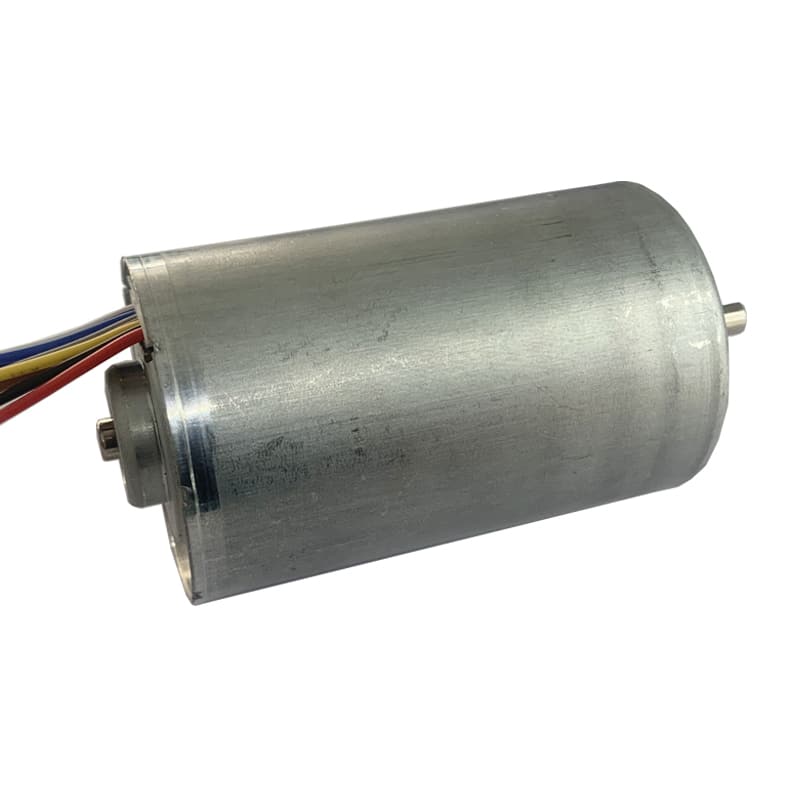
How Electromagnetic Design Impacts Brushless Motor Performance
When it comes to brushless motors, the electromagnetic design is the backbone of their performance. This design determines how efficiently the motor converts electrical energy into mechanical motion, making it a critical factor in achieving high efficiency and reliability.
At the heart of the electromagnetic design is the magnetic circuit. A well-optimized magnetic circuit minimizes energy losses, ensuring that the motor operates at peak efficiency. This is particularly important in applications like robotics or medical devices, where precision and energy conservation are paramount.
Another key aspect is the winding design. The way the motor’s coils are wound and the quality of the wire used can significantly impact resistance losses. High-quality materials and an optimized winding layout reduce heat generation and improve overall efficiency. For example, in mini or micro brushless motors used in smart home systems, efficient winding design ensures smooth operation while keeping energy consumption low.
Finally, the rotor design plays a crucial role in determining the motor’s dynamic response. A well-designed rotor reduces rotational inertia, allowing the motor to start, stop, and change speeds more quickly. This is especially beneficial in applications like electric valves or vending machines, where rapid adjustments are often required.
In summary, the electromagnetic design of a brushless motor directly influences its efficiency, responsiveness, and overall performance. By focusing on a well-optimized magnetic circuit, high-quality winding materials, and an efficient rotor design, you can ensure your brushless motor delivers the best possible results for your application.
Choosing the Right Bearings for Optimal Brushless Motor Performance
When it comes to brushless motors, the type of bearings used can make a significant difference in performance, efficiency, and lifespan. Bearings are responsible for supporting the motor’s rotating components, reducing friction, and ensuring smooth operation. Selecting the right bearing type is crucial, especially for mini and micro brushless motors used in applications like smart home devices, medical equipment, and robotics.
There are two main types of bearings commonly used in brushless motors: rolling bearings and sliding bearings. Each has its own advantages and is suited for different operating conditions.
Rolling Bearings:
Rolling bearings, such as ball bearings, are known for their low friction and ability to handle high speeds. They are ideal for applications where the motor needs to operate at high RPMs, such as in drones or high-speed robotics. Their robust design also allows them to handle significant loads, making them a popular choice for industrial applications.Sliding Bearings:
Sliding bearings, also known as plain bearings, are better suited for low-speed, high-load, or noise-sensitive applications. They operate with minimal noise, making them perfect for devices like medical equipment or smart home systems where quiet operation is essential. While they may not handle high speeds as well as rolling bearings, their simplicity and durability make them a reliable choice for many scenarios.
Why Bearing Choice Matters
The type of bearing you choose directly impacts the motor’s friction levels, heat generation, and overall efficiency. For example, in a vending machine, where the motor may need to start and stop frequently, rolling bearings can provide the quick response needed. On the other hand, in a sanitary dispenser, where noise reduction is critical, sliding bearings might be the better option.
In conclusion, selecting the right bearing type for your brushless motor is essential for optimizing performance and ensuring long-term reliability. By understanding the strengths and limitations of rolling and sliding bearings, you can make an informed decision that aligns with your specific application needs.
How Power Supply Voltage Affects Brushless Motor Performance
The power supply voltage is a critical factor that directly influences the performance of brushless motors. It determines the motor’s speed, torque, and overall efficiency, making it essential to choose the right voltage for your specific application. Whether you’re working with mini brushless motors in smart home devices or high-power motors in industrial robotics, understanding the relationship between voltage and motor performance is key to achieving optimal results.
Voltage and Motor Speed
The speed of a brushless motor is directly proportional to the power supply voltage. A higher voltage typically results in faster motor speeds, while a lower voltage slows the motor down. For example, in applications like electric valves or vending machines, where precise speed control is required, maintaining a stable voltage ensures consistent performance.
Voltage and Torque
Torque, or the motor’s rotational force, is also affected by voltage. A higher voltage can increase the motor’s torque output, allowing it to handle heavier loads. However, if the voltage is too high, it can cause the motor to overheat or even become damaged. On the other hand, a voltage that’s too low may prevent the motor from generating enough torque to perform its intended function.
The Impact of Voltage Fluctuations
Voltage fluctuations can lead to unstable motor performance, affecting both speed and torque. Inconsistent voltage can cause the motor to operate erratically, reducing its efficiency and potentially shortening its lifespan. For instance, in medical equipment where reliability is critical, even minor voltage fluctuations can compromise performance.
Choosing the Right Voltage
To ensure your brushless motor operates at its best, it’s important to select a power supply voltage that matches the motor’s specifications. Always refer to the motor’s datasheet or consult with the manufacturer to determine the optimal voltage range. Additionally, using voltage regulators or stabilizers can help maintain a consistent power supply, especially in applications where voltage fluctuations are common.
In summary, the power supply voltage plays a vital role in determining the speed, torque, and overall performance of brushless motors. By selecting the right voltage and ensuring a stable power supply, you can maximize the efficiency and reliability of your motor, whether it’s powering a smart home device or a high-precision robotic system.
The Role of Cooling Systems in Brushless Motor Performance
Heat management is a critical aspect of brushless motor performance, especially in applications where motors operate continuously or under heavy loads. Excessive heat can lead to reduced efficiency, premature wear, and even motor failure. This is where cooling systems come into play. By effectively dissipating heat, cooling systems ensure that brushless motors maintain optimal performance and longevity, whether they’re used in smart home devices, medical equipment, or industrial robotics.
Why Cooling Matters
During operation, brushless motors generate heat due to electrical resistance and mechanical friction. If this heat is not properly managed, it can cause the motor’s internal components to degrade over time. For mini and micro brushless motors, which are often used in compact devices like sanitary dispensers or electric valves, efficient cooling is even more critical due to their limited space for heat dissipation.
Types of Cooling Systems
There are several cooling methods available, each suited for different types of brushless motors and applications:
Natural Convection Cooling:
This is the simplest form of cooling, where heat is dissipated through the motor’s surface into the surrounding air. It’s ideal for low-power motors used in devices like small fans or smart home sensors, where heat generation is minimal.Forced Convection Cooling:
In this method, fans or blowers are used to increase airflow around the motor, enhancing heat dissipation. Forced convection cooling is commonly used in medium-power motors, such as those found in vending machines or security systems, where heat generation is moderate.Liquid Cooling:
For high-power motors, such as those used in industrial robotics or electric vehicles, liquid cooling is often the most effective solution. Coolant circulates through channels in the motor, absorbing heat and carrying it away. This method provides superior heat dissipation and is essential for maintaining performance in demanding applications.Phase Change Material (PCM) Cooling:
PCM cooling uses materials that absorb heat by changing from solid to liquid. This method is particularly useful in applications where space is limited, and traditional cooling methods are impractical.
Optimizing Cooling for Your Application
Choosing the right cooling system depends on your motor’s power rating, operating environment, and application requirements. For example, in medical equipment where noise reduction is critical, natural convection or PCM cooling might be preferred. In contrast, high-power motors in robotics or industrial machinery may require liquid cooling to handle intense heat generation.
The Benefits of Effective Cooling
An optimized cooling system not only improves motor efficiency but also extends its lifespan by preventing overheating. This is especially important in applications where reliability is paramount, such as in medical devices or security systems.
In conclusion, cooling systems play a vital role in maintaining the performance and reliability of brushless motors. By selecting the appropriate cooling method for your application, you can ensure that your motor operates efficiently and lasts longer, even under challenging conditions.
Maximizing Brushless Motor Performance: Key Takeaways
Brushless motors have become indispensable in a wide range of applications, from smart home devices and medical equipment to robotics and industrial machinery. Their high efficiency, reliability, and low maintenance requirements make them a preferred choice for many industries. However, to fully harness their potential, it’s essential to understand the factors that influence their performance.
In this guide, we’ve explored the key elements that affect brushless motor performance:
- Electromagnetic Design: Optimizing the magnetic circuit, winding design, and rotor design can significantly improve efficiency and responsiveness.
- Bearing Types: Choosing between rolling bearings and sliding bearings depends on your application’s speed, load, and noise requirements.
- Power Supply Voltage: Selecting the right voltage ensures stable speed and torque while avoiding overheating or underperformance.
- Cooling Systems: Effective heat dissipation through natural convection, forced convection, liquid cooling, or phase change materials is crucial for maintaining performance and extending motor life.
By carefully considering these factors, you can optimize the performance of your brushless motors, ensuring they deliver reliable and efficient operation in any application. Whether designing a compact smart home device or a high-power industrial robot, understanding these principles will help you make informed decisions.
At Etonm Motor, we specialize in customized brushless motor solutions tailored to your needs. Our expertise in mini and micro brushless motors ensures that you get the perfect motor for your application, whether it’s for medical care, robotics, or smart home systems.
Take the Next Step
Ready to optimize your brushless motor performance? Visit our website to explore our range of brushless motors or contact us for personalized recommendations. Let us help you achieve the perfect balance of efficiency, reliability, and performance for your next project.
Related Reading
- Technical Parameters and Customization of Low RPM Brushless Motors: A Comprehensive Guide
- Comprehensive Guide to Low-Noise Gear Motors: Features, Types, and Applications
- How to Choose the Right Curtain Motor: Key Factors and Expert Tips
- 12V DC Motor High Torque Low RPM Performance
- Top 5 Applications of Brushless DC Motors in Industrial Automation
- Brushless DC Motors in Medical Devices: The Ultimate Guide to BLDC Motor Applications
- AC Motors vs DC Motors: Which is Best for Your Application?

